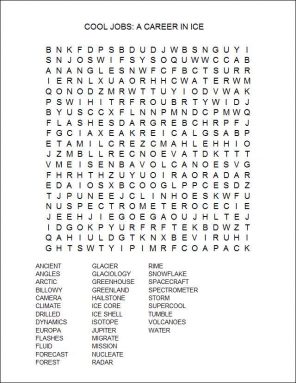Cool Jobs: Careers on ice
Three scientists pursue their passion for frozen worlds
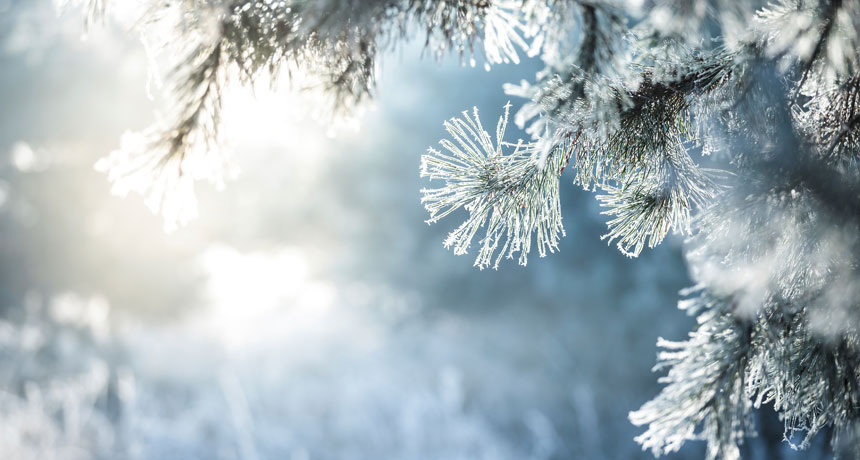
Ice and snow can be cold, inconvenient, dangerous — or fun. They can also be great subjects for scientific study.
konradlew/istockphoto
By Beth Geiger
From his tent in eastern Greenland, Bruce Vaughn sees nothing but ice and snow. A cold wind blows constantly. On the warmest day temperatures may reach –8 degrees Celsius. That’s about 17° Fahrenheit.
Vaughn doesn’t mind. Cold is what you get when you study ice. Vaughn is a glaciologist with the Institute of Arctic and Alpine Research (INSTAAR) in Boulder, Colo. He will be camped on this remote ice cap with 10 other scientists for weeks.
When snow falls here, very little of it melts. Instead, it builds up. New layers of snow pack down older layers until they form ice. The scientists drill into the thick ice and collect a long, tube-shaped sample called a core. From the very bottom of the ice cap, 580 meters (1,900 feet) down, they retrieve ice that may be as much as 125,000 years old.
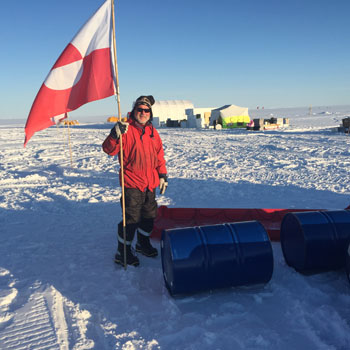
The ice contains bubbles of air captured when the snow fell. Those tiny bubbles hold big clues to Earth’s ancient climate. “The bubbles trapped in the ice are a time capsule of the atmosphere,” says Vaughn.
Over the last 150 years, humans have triggered climate change by adding greenhouse gases, such as carbon dioxide, to the atmosphere. “It’s no secret that we are taking our climate places it’s never been before,” says Vaughn. By analyzing and measuring the core, Vaughn, along with geochemists, climatologists and other scientists, can reconstruct climate conditions going back tens of thousands of years or more. “Exploring the climate record and understanding how fast Earth responded will help us forecast the future,” he says.
From the very cool to the extremely cold, scientists are learning surprising things from ice. Some, like Vaughn, find compelling climate stories within ancient ice. Some study snowflakes to discover new details about storms and weather. Other researchers look for ice much, much farther away, on distant planets and moons where ice may hide surprising secrets. Here we meet three researchers with very different reasons to love ice.
Tiny bubbles, big answers
Vaughn’s career blends his three passions: being outdoors, working with tools and Earth science. After earning his master’s degree in glaciology, Garrett co-founded a geochemical laboratory in Colorado. He splits his time between the lab and bone-chilling fieldwork.
Before they could set up their remote camp, Vaughn and the other scientists had to organize their gear at a tiny settlement on the Renland Ice Cap in eastern Greenland. They also had to chase away a polar bear or two. They loaded 17,000 kilograms (18.5 tons) of gear and food into a plane mounted with skis. It took several flights to get it all onto the ice cap. Finally, the scientists flew up there, too. Every day, the team drilled a little deeper into the ice, retrieving the core. The core was then sent by refrigerated airplanes to Vaughn’s laboratory for analysis.
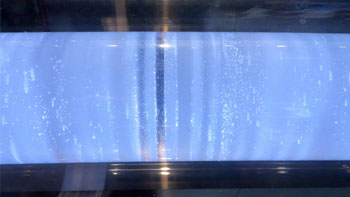
Seasonal changes in ice, such as the different texture created by summer melt, create distinct layers. Each layer, like growth rings in a tree, marks one year’s snowfall. In the laboratory, Vaughn records each annual layer. Then he uses a spectrometer to measure isotopes of oxygen and hydrogen in the bubbles. Isotopes are forms of the same element that have different masses. As it happens, the relative amount of different isotopes varies with temperature. “These isotopes reveal the average temperature when the snow came out of the sky and landed on the ice cap,” Vaughn explains. That tells him what temperatures were like thousands of years in the past.
Ice cores contain other clues to ancient climate. The thickness of each layer reflects how much snow fell compared to other years. Dark bands of ash from volcanoes or distant forest fires can be analyzed to reveal their source. Once scientists know where the material blew in from, they learn more about wind patterns from that time. Scientists also compare ice cores from Greenland to cores from other places, such as Antarctica. That helps them create a bigger picture of how Earth’s climate has changed over time.
Vaughn has been on 13 expeditions so far and is looking forward to more. “We’ve learned something unique and exciting with every ice core we’ve drilled,” he says. Besides, he adds, “I love the cold.”
Worlds away
Vaughn may like being cold, but physicist Krista Soderlund is happy to study ice from her cozy office at the University of Texas in Austin.
Soderlund explores ice much farther away than Greenland. Her favorite ice these days is on Europa. That’s one of Jupiter’s moons. It’s about 710 million kilometers (441 million miles) from Earth.
(Story continues below image)
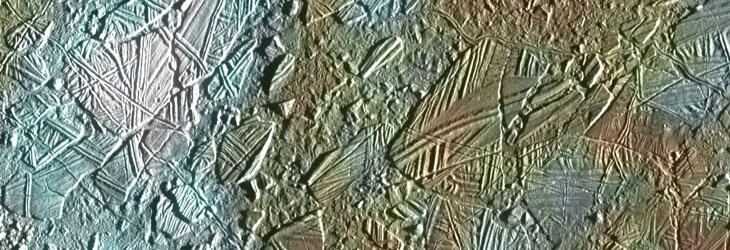
Europa is completely covered in ice. It looks like a smooth white ball, crisscrossed by red cracks. The National Aeronautics and Space Administration (NASA) flew its Galileo spacecraft past Europa in 1995. From images that it sent back, it now appears there is a deep ocean beneath that ice. Most intriguing of all, scientists think there is a chance that Europa might host life. “We know it’s a super interesting place,” says Soderlund.
Soderlund, with a PhD in physics, specializes in fluid dynamics. That’s the way liquids move and interact. She’s especially curious about what goes on within and below Europa’s ice shell. Do blobs of warmer water migrate up through the ice? Are parts of the icy shell actually icebergs that float on unseen lakes? The answers might reveal more about how heat moves through Europa. And that heat could affect if, and where, life might occur on this moon.
To explore these questions, Soderlund has been working on a new radar instrument. Radar uses radio waves to characterize objects. “One thing that radar can see very well is water, such as lakes that might be within the ice,” she says. Radar can also help determine the thickness of Europa’s ice.
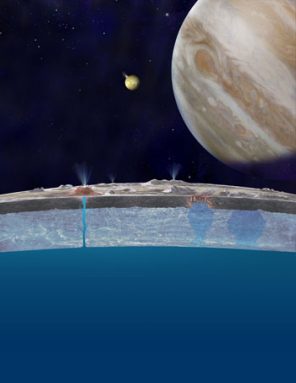
In summer 2015, Soderlund’s project got a huge boost. Her team’s radar was selected to visit Europa up close. Along with eight other instruments, it will fly aboard a NASA spacecraft that will be launched sometime in the 2020s. That mission will take three to seven years to reach Europa.
The out-of-this-world mission may be a long way off. Still, there’s no time to chill. At least 150 scientists are already working on the instruments that will travel on the spacecraft. “Many more people are working on the spacecraft itself,” Soderlund says. A team that big takes a lot of communication and collaboration.
Soderlund has been fascinated by space ever since she saw the northern lights from her childhood home in northern Minnesota. For her, studying ice on far-off Europa is a cool dream come true.
Snowflake science
Back on Earth, snowflakes tumble from the Utah sky. They pile into a billowy powder that makes Utah a skier’s paradise. Throughout winter, chairlifts at the famous Alta Ski Area are full of skiers.
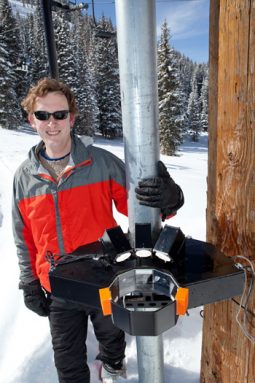
Tim Garrett is there, too. But Garrett isn’t thinking about skiing. He is an atmospheric scientist at the University of Utah in Salt Lake City. He’s interested in snowstorms and how to predict them better.
Snowflakes, says Garrett, offer many telltale clues to the stormy, sky-high conditions in which they formed. How are the snowflakes shaped and oriented? How much do they weigh? How fast do they fall? Garret says if you capture these characteristics, you’ll get an inside view into each snowstorm.
Snowflakes first form as droplets inside clouds. Before these droplets can turn into ice, they need something, such as a dust particle, to crystallize, or nucleate, around. The droplets may remain liquid far below the normal freezing point of water. They can even become supercooled to –40 °C (–40 °F). Once an ice crystal forms, other crystals start sticking to it to form a snowflake. Few are picture perfect. “It turns out that the six-sided shapes are rare. In reality, most snowflakes are much more complicated,” says Garrett.
Garrett wanted to capture pictures of snowflakes as they fall, before they become melted, squashed or clumped. The problem: There was no camera good enough. So he and a colleague invented one. “It took years to develop. We had real challenges,” he says. The motion sensor had to be sensitive enough to detect even the tiniest snowflakes. To capture a falling flake in sharp detail, the camera also had to snap pictures incredibly fast — as fast as 1/40,000 of a second — yet still let in enough light.
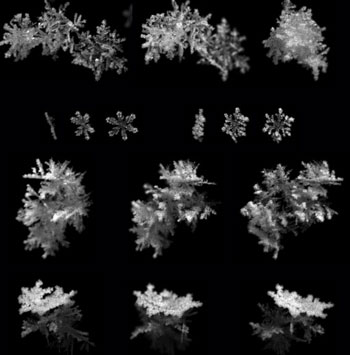
Finally, succcess. “Our camera is the first of its kind to automatically take high-resolution photographs from multiple angles while measuring how fast the snowflakes fall,” says Garrett. It reveals snowflakes in all their delicate, icy, three-dimensional detail.
Garrett, a skier, knew it made sense to install the cameras at a ski resort. There was already electricity, lift access to different elevations and buildings to attach the camera to.
He put the first camera just outside dorms where ski-resort workers slept. But when the first snowstorm hit late one night, the camera burst into a flurry of flashes. The workers thought something was exploding. So Garrett moved the camera to an unoccupied building. Now, a second camera is installed high up on the mountain. The two cameras capture images of about 10,000 snowflakes during each storm.
Garrett’s specialized cameras are bringing snowstorms into focus. Comparing snowflakes with other data such as wind direction and radar, he says, gives a much more complete picture of a storm. That, in turn, will help atmospheric scientists predict storms and their effects more accurately.
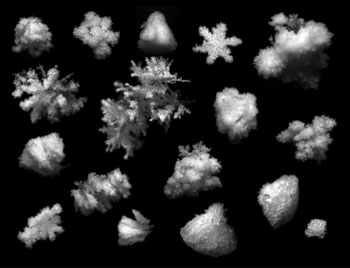
For example, Garret says that tall, deep storms with more turbulent air inside seem to produce snowflakes that are heavily
rimed
. Rime ice is frost formed by rapidly freezing water. “Each snowflake from these storms stays afloat for a long time and collects hundreds of thousands of tiny droplets. It ends up looking like a little hailstone.” Calmer, shallower storms, on the other hand, he says, tend to produce fluffier snowflakes called aggregates.
Still, says Garrett, “these simple rules often don’t work, and we don’t know why yet.”
At Alta, he snaps on his skis, climbs onto the chairlift and heads up the mountain to check on his camera. To him, the tiny crystals of ice falling from the sky are as fascinating as they are beautiful.
This is one in a series on careers in science, technology, engineering and mathematics made possible with generous support from Alcoa Foundation.
Power Words
(for more about Power Words, click here)
Arctic A region that falls within the Arctic Circle. The edge of that circle is defined as the northernmost point at which the sun is visible on the northern winter solstice and the southernmost point at which the midnight sun can be seen on the northern summer solstice.
atmosphere The envelope of gases surrounding Earth or another planet.
carbon dioxide A colorless, odorless gas produced by all animals when the oxygen they inhale reacts with the carbon-rich foods that they’ve eaten. Carbon dioxide also is released when organic matter (including fossil fuels like oil or gas) is burned. Carbon dioxide acts as a greenhouse gas, trapping heat in Earth’s atmosphere. Plants convert carbon dioxide into oxygen during photosynthesis, the process they use to make their own food.
climate The weather conditions prevailing in an area in general or over a long period.
climate change Long-term, significant change in the climate of Earth. It can happen naturally or in response to human activities, including the burning of fossil fuels and clearing of forests.
climatology The study of climate over seasons, decades or millennia. Climate varies over time and this field looks at measuring all aspects of climate and using such data to better understand what factors are behind those changes. Scientists who study climatology are known as climatologists.
core A long, tube-like sample drilled down into ice, soil or rock.
crystal A solid consisting of a symmetrical, ordered, three-dimensional arrangement of atoms or molecules. It’s the organized structure taken by most minerals.
Europa One of the moons of Jupiter and the sixth-closest satellite to the planet. Europa, 1,951 miles across, has a network of dark lines on a bright, icy surface.
fluid dynamics The study of liquids and gases in motion.
geochemistry A science that deals with the chemical composition of and chemical changes in the solid material of Earth or of another celestial body (such as the moon or Mars). Scientists who study geochemistry are known as geochemists.
glacier A slow-moving river of ice hundreds or thousands of meters deep. Glaciers are found in mountain valleys and also form parts of ice sheets.
glaciology The study of glaciers. A scientist that studies glaciers is known as a glaciologist.
greenhouse gas A gas that contributes to the greenhouse effect by absorbing heat. Carbon dioxide is one example of a greenhouse gas.
greenhouse effect The warming of Earth’s atmosphere due to the buildup of heat-trapping gases, such as carbon dioxide and methane. Scientists refer to these pollutants as greenhouse gases.
Greenland The world’s largest island, Greenland sits between the Arctic Ocean and North Atlantic. Although it is technically apart of North America, just east of Northern Canada, Greenland has been politically more linked to Europe. Indeed, Vikings arrived in Greenland around the 10th century, and for a time the island was a colony of Denmark. In June 2009, Greenland became an independent nation. Ice covers roughly 80 percent of Greenland. Indeed, the Greenland ice sheet is the world’s largest. If its frozen water were to melt, it could raise sea levels around the world by 6 meters (about 20 feet). Although this is the 12th biggest nation (based on surface area), it averages the fewest people per square kilometer of its surface area.
ice cap (also called ice sheet) The broad blanket of ice, most of it kilometers deep, that covers most of Antarctica. An ice sheet also blankets most of Greenland.
isotopes Different forms of an element that vary somewhat in weight (and potentially in lifetime). All have the same number of protons but different numbers neutrons in their nucleus. As a result, they also differ in mass.
Jupiter (in astronomy) The solar system’s largest planet, it has the shortest day length (10 hours). A gas giant, its low density indicates that this planet is composed of light elements, such as hydrogen and helium. This planet also releases more heat than it receives from the sun as gravity compresses its mass (and slowly shrinks the planet).
master’s degree A university graduate degree for advanced study, usually requiring a year or two of work, for people who have already graduated from college.
moon The natural satellite of any planet.
National Aeronautics and Space Administration (NASA) Created in 1958, this U.S. agency has become a leader in space research and in stimulating public interest in space exploration. It was through NASA that the United States sent people into orbit and ultimately to the moon. It has also sent research craft to study planets and other celestial objects in our solar system.
nucleation (in chemistry) The process of new structures forming by self-assembly, or the start of a new phase in a chemical process that happens spontaneously. For instance, it can mark the initial stage of crystal formation, when a liquid or gas begins to form organized crystals.
physics The scientific study of the nature and properties of matter and energy. Classical physics is an explanation of the nature and properties of matter and energy that relies on descriptions such as Newton’s laws of motion. Quantum physics, a field of study which emerged later, is a more accurate way of explaining the motions and behavior of matter. A scientist who works in that field is known as a physicist.
radar A system for calculating the position, distance or other important characteristic of a distant object. It works by sending out periodic radio waves that bounce off of the object and then measuring how long it takes that bounced signal to return. Radar can detect moving objects, like airplanes. It also can be used to map the shape of land — even land covered by ice.
rime ice A coating of tiny, opaque ice crystals formed when supercooled water freezes rapidly on contact with an object.
spectrometer An instrument that measures a spectrum, such as light, energy, or atomic mass. Typically, chemists use these instruments to measure and report the wavelengths of light that it observes. The collection of data using this instrument, a process is known as spectrometry, can help identify the elements or molecules present in an unknown sample.
supercool To cool a liquid below its freezing point without it crystallizing or turning solid.
Word Find (click here to enlarge for printing)
